Tree cutting tools and maintenance guide
Tree cutting tools and maintenance guide
Introduction
Felling and pruning trees, garden clearance and chopping logs for firewood can be backbreaking work when using manual wood cutting tools. So, if you’re doing any of these tasks regularly, switching to power tree cutting tools will save you time and effort.
This guide covers all the different types of tools to cut trees, branches, logs, and leaf blowing. It looks in detail at chainsaws, log splitters, log saws and leaf blowers. Highlighting the tasks they’re best used for, their benefits, things to consider before buying and answers some common questions.
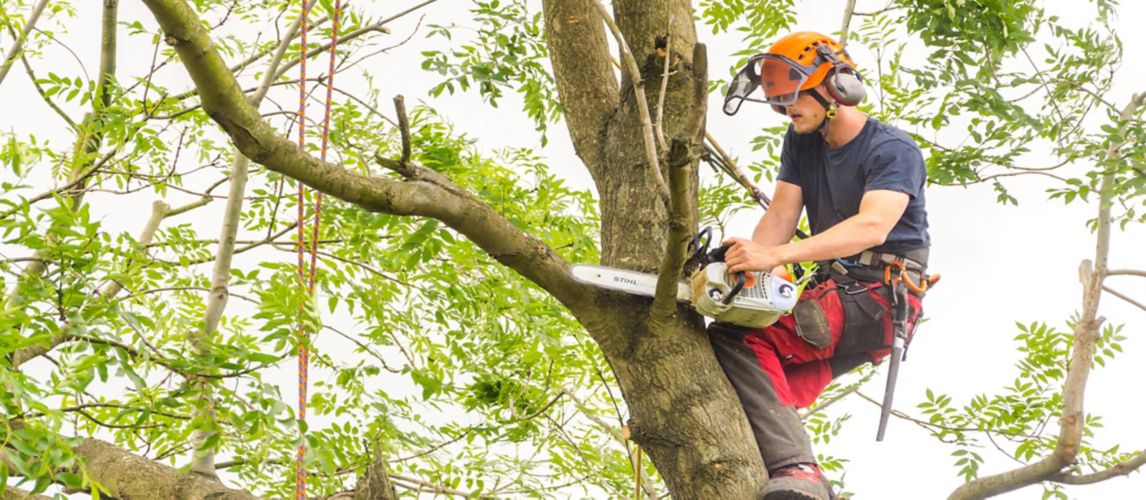
Types of Tree and Wood Cutting Tools
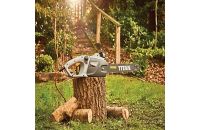
There are four main types of wood and tree cutting power tools available, including power tools to cut tree branches, wood splitting tools to cut logs and tools for clearing up the debris. Pruning shears and tree loppers are also a more manual option for smaller jobs.
Here’s a brief look at each type, but we’ll go into more detail later in this guide:
- Chainsaws
A chainsaw is a powered saw that cuts through wood with a set of teeth attached to a rotating chain. It’s an effective and efficient tool used for felling trees, cutting back branches, pruning hedges and harvesting firewood. Compared to using a hand saw, chainsaws take a lot of the physical effort out of these tasks, making them quicker and easier.
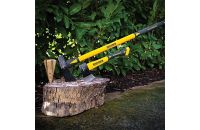
- Log splitters
A log splitter is a piece of machinery for splitting pre-cut sections of tree trunks or branches into smaller logs. There are manual and powered versions available, but both make the task of cutting up firewood faster and less physically demanding than using an axe.
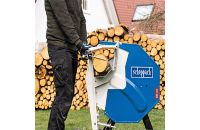
- Log saws
A log saw is a piece of equipment that cuts tree branches into logs using a metal circular blade. They have a powerful motor that cuts through even the most challenging wood types, making light work of preparing firewood compared to using a hand saw.
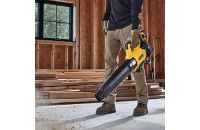
- Leaf blowers
A leaf blower is a piece of gardening equipment used to clear leaves or debris. It propels air out of the nozzle so you can blow leaves into a pile, making it easier to then collect them up. Some leaf blowers also have a vacuum function (usually called garden vacs) that sucks the leaves into an attached bag. A leaf blower is a quicker and easier alternative to using a rake.
Choosing a Chainsaw
Chainsaws are available in a range of engine sizes, cutting lengths and power types, and can be packed with various benefits to make light work of any job. In this section, we look at all the available options.
How do chainsaws work?
Chainsaws cut through wood using saw blades or teeth attached to a rotating metal chain that moves around a guide bar. The movement of the chain is powered by an electric or petrol-powered engine.
There are three types of chains that cut through different types of wood. For example, chains with square chain links are designed to cut hardwoods. Chains with round chain links are ideal for softwoods. And a chain called square tooth round grind can cut hard and softwoods.
What are chainsaws used for?
A chainsaw is the best tool for cutting tree branches or trunks. So, they can be used for trimming back tree branches, trimming large hedges or for intensive felling. There are also pruning tools to cut tall branches, called pole chainsaws or pole saws, which have a small chainsaw at the end of a long pole.
When you buy a chainsaw, it’s essential to choose one appropriate for the type of task you want to do. For example, the type and size of the wood being cut affect how much power you need and the size of the guide bar. So, you’ll need a less powerful engine and shorter guide bar to cut small softwood tree branches than if you were cutting large hardwood tree branches.
Chainsaw features
- Type of handle
Anti-vibration and ergonomic soft-grip handles help to minimise discomfort. And a wrap-around handle helps with better accuracy when cutting at awkward angles.
- Chain speed
This indicates how quickly the chainsaw will cut through wood, measured in metres per second (m/s). Electric and battery-powered chainsaws have a chain speed of around 9m/s, while petrol chainsaws average around 20m/s.
- Kickback brake or anti-kickback function
This safety feature minimises the risk of the chainsaw kicking back at the user if it hits another object. Chainsaws with this feature apply a brake that forces the chainsaw to stop if kickback occurs.
- Bar measurement
This refers to the length of a chainsaw’s guide bar and its cutting width, measured in centimetres (cm). The longer the bar, the bigger the diameter of wood you can cut in a single pass.
- Weight
The weight of a chainsaw (measured in kilograms (kg)) will affect your comfort while using it. Electric and battery-powered models are much lighter than petrol ones.
- Chain tension or adjustment
The chain's tension on a chainsaw must be adjusted frequently to ensure it remains safe. Some models come with a tensioning tool (or they can be purchased separately). But, for ease, some models incorporate a dial on the side of the chainsaw that simply needs to be turned to adjust the chain tension
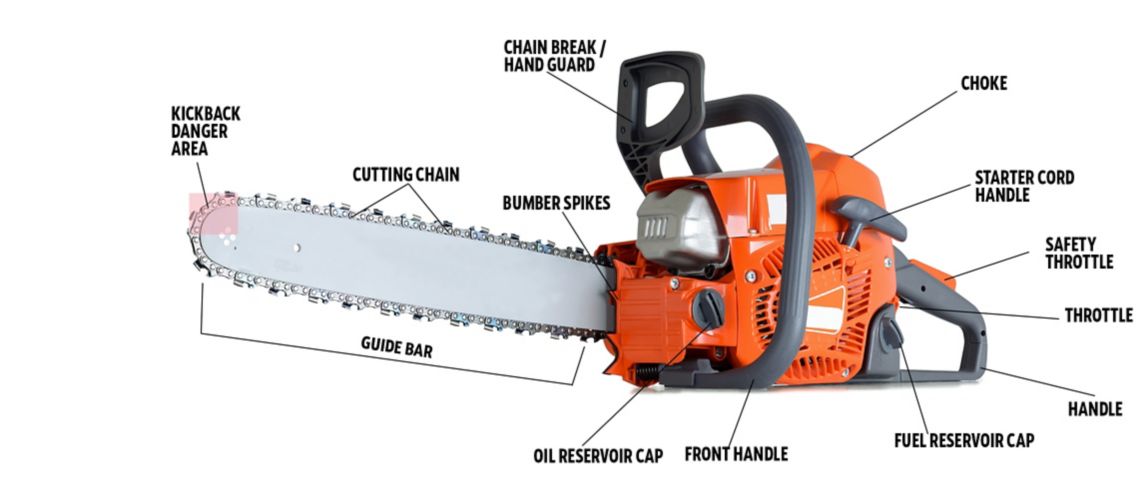
Types of Chainsaw
There are three types of chainsaws in terms of how they are powered. The best type to choose will depend on several factors. Such as how powerful the chainsaw needs to be in relation to the type and size of wood it needs to cut. How often it will be used. Whether you'll have easy access to an electricity supply. And how easily you'll need to be able to manoeuvre while using it.

- Petrol
Petrol chainsaws are perfect for cutting hardwoods, and large tree trunks or branches as they are the most powerful and have the longest bar length compared to the other types. They also have the quickest chain speed, so they'll get through jobs faster than other models. And, they have no restrictive cables, which means they can be used where there's no power supply. But they are heavy to handle and noisier than electric and battery-powered models. And they need regular maintenance and servicing. For these reasons, petrol chainsaws are best suited for experienced users who regularly carry out big cutting jobs.
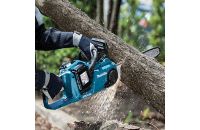
- Cordless
Cordless chainsaws are powered by a rechargeable lithium-ion battery. Like petrol chainsaws, they're ideal for working in areas with no electricity supply, and they are easier to manoeuvre because there are no restrictive cables. However, they are limited by their battery running time (measured in ampere hours (Ah)) which is often not very long, so it's best to always have a spare battery. In addition, they are less powerful than petrol chainsaws (with power measured in volts (V) and have shorter guide bar lengths. But they are lightweight, quiet, easy to handle and require less maintenance. For these reasons, corded chainsaws are best suited to small and infrequent cutting jobs.
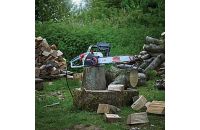
- Corded
Corded chainsaws plug into a mains electricity socket and are often more powerful than cordless models but not as powerful as petrol models. Their power is measured in watts (W) – the higher the wattage, the more powerful the chainsaw is. Because they use electricity, they aren't restricted by run time, and they're lightweight and quiet to use. They also require less maintenance than petrol models. However, their use is limited by the cable length and manoeuvring around the cable. For these reasons, they are suited for small jobs and less experienced users.
Sharpening, Storing and Maintaining a Chainsaw
It's essential to keep your chainsaw well maintained to get the best out of it and extend its life. Of course, every chainsaw is different, so always follow the manufacturer's instructions. But here are a few general tips:
All types of chainsaws:
- Lubricate the chain with chain lubrication oil: Most chainsaws come with pre-oiled chains, but the oil will need to be topped up to keep the chain moving freely and stop rust.
- Sharpen the chain 'teeth' with a chain sharpener: Over time, the saw blades or cutting teeth get blunt, so they'll need to be sharpened for the saw to cut efficiently.
- Keep replacement chains: Chains wear out completely over time, so it's good to keep a spare ready.
Petrol chainsaws:
In addition to the maintenance recommended above, petrol chainsaws should be serviced at the beginning of each season (or more often if used daily). The oil level, spark plug, and air filter are things to keep an eye on. Also, be aware that petrol has a shelf life of 30 days. So, don't use fuel that's more than 30 days old, and don't leave petrol in the tank if the chainsaw is going to be stored for 30 days or more.
Choosing a Log Splitter
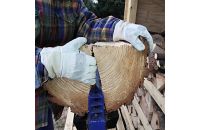
Log splitters are used to cut tree trunks and thick branches lengthways for firewood. They're also referred to as wood splitters, mechanical axes or splitters.
A log splitter works by using a ram to push a tree trunk into a cutting wedge. You simply lay a length of tree trunk onto a platform (horizontal log splitters) or roll it, standing upright, onto a base plate (vertical log splitters), then pull a lever or press a button to drive the cutting wedge into the wood, splitting the trunk in two.
To decide what is the best log splitter for your needs, consider what size of wood it needs to cut. For example, horizontal log splitters require the tree trunk to be lifted onto a platform, so it's best for splitting light, thin, short logs of less than 50cm. On the other hand, you don't need to raise the logs completely off the ground with a vertical log splitter, so it's ideal for heavy, thick logs over 50cm long.
Other options to check when comparing log splitters include:
- Splitting force: measured in tonnes. The bigger the force, the larger the log it will be able to handle at a faster pace.
- The splitting cycle time and speed: how long it takes to split a log and return to the start position.
- The size of the splitting wedge: the bigger the wedge, the larger the logs it can split.
- The log capacity size: what is the maximum size of log it can cut?
- The type of power: see the next section for details.
When comparing these options, consider the number of cubic metres of wood you want to split per year.
Types of Log Splitter
There are three types of log splitters in terms of how they are powered. The best type to choose will depend on several factors. Such as how powerful the log splitter needs to be in relation to the type and size of wood it needs to split. How often it will be used. And whether you'll have easy access to an electricity supply or not.
- Electric log splitters
Electric log splitters are ideal for splitting up to 10 cubic metres of wood per year. They can handle logs up to 40cm thick and are available with a splitting force of between 4 and 8 tonnes. Their power is measured in kilowatts (kW), ranging from 1.5kW to 3kW. The higher the splitting force and wattage, the more powerful the log splitter will be. Electric log splitters are quieter to use than petrol models. But they are restricted by the length of their cable in terms of where they can be used.
- Petrol-powered log splitters
Petrol log splitters are ideal for splitting up to 12 cubic metres of wood per year. They have a four-stroke engine that makes them very powerful and efficient. They can split wood up to 60cm thick and are available with a splitting force of between 11 and 22 tonnes. Their power is measured in horsepower (HP). The higher the splitting force and horsepower, the more powerful the log splitter will be. Petrol log splitters are noisier than electric models. But they aren't restricted by cable, so they are ideal for use in areas with no electricity supply. They also require more maintenance than electric models.
- Hydraulic log splitters
Hydraulic log splitters are best for splitting more than 12 cubic metres of wood per year. On these models, an electric or petrol-powered engine drives a pump that pressurises hydraulic oil, which is then used to drive a hydraulic cylinder that pushes logs onto a cutting wedge. They can split wood approximately 35cm thick, and they're available with a splitting force of 11 tonnes and upwards.
Choosing a Log Saw
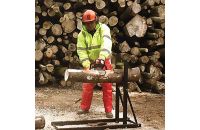
Log saws are used to cut tree branches into smaller logs, so they are ideal for those wanting to prepare wood for a fire. They consist of a robust steel frame with a circular cutting saw mounted on one side and a space to insert lengths of timber for cutting on the other. The blade and cutting area are well sealed, making this one of the safest ways to cut logs. Features to look out for are adjustable cutting length stops to achieve the exact log size you require and various cutting heights to support different log thicknesses.
Log saws shouldn’t be confused with log sawhorses. Log sawhorses are metal stands that hold logs while being cut with a chainsaw or handsaw. They're ideal for use when cutting logs, branches, timber and beams, holding the material in place to enable one person to cut safely and efficiently.
Types of Log Saw
Log saws are mains-powered and are available with a 2.2kW or 3kW engine, with 3kW being the most powerful. They have a TCT (tungsten carbide tips) carbon steel blade that can cut up to 50 times longer than a standard steel blade. The only downside is this type of blade isn’t easy to sharpen.
One other choice is whether to buy a log saw with an air-cooled or fan-cooled engine. Air-cool engines use natural airflow to cool the motor, while fan-cool engines blow air at the motor to cool it down. Air-cooled engines are noisier and can be less long-lasting and less efficient than fan-cooled engines.
Choosing a leaf blower

Leaf blowers are used to clear up leaves and other small debris from gardens and pathways. They work by blowing a jet of air out through a nozzle which you use to push the leaves into a pile, making them easier to collect. Some models also vacuum the leaves up into an attached bag. Some features to look for are:
- A carry strap: leaf blowers can get heavy when used over large areas for long periods, so a carry strap to help take the weight will make the job more comfortable.
- Wheels: wheels are even better for comfort and manoeuvrability than a carry strap.
- The bag capacity: if you're collecting leaves from a large area or there's a heavy leaf fall, the bigger the bag, the better. It means you won't have to stop as often to empty it.
Detachable parts: if storage space is limited, a leaf blower with a detachable tube will make it more compact.
Types of leaf blower
There are four types of leaf blower available. The best leaf blower for you will depend on several factors. Such as how large the area you’re working on is. Whether you want a vacuum and mulching function too. How often it will be used. And whether you’ll have easy access to an electricity supply or not.
- Cordless
Cordless leaf blowers are powered by a rechargeable lithium-ion battery. They're ideal for working in areas with no electricity supply and are easy to manoeuvre because there are no restrictive cables. However, they are limited by their battery running time (measured in amphere hours (Ah)) which is often not very long, so it's best to always have a spare battery handy. Their power is measured in volts (V), and they can range from 18-48V – the higher the voltage, the more powerful the engine is. They weigh less than petrol leaf blowers but are less powerful. So, for those reasons, they're most suited for use on small driveways, deck areas or patios.
- Electric
Electric leaf blowers work using mains electricity. They're usually more powerful than cordless models but not as powerful as petrol models. Because they use electricity, there are no restrictions on how long they can be used. However, they are limited by their cable length. For these reasons, they are suitable for use in large areas close to an electricity supply.
- Petrol
Petrol leaf blowers are the most powerful type of leaf blower. They have no restrictive cables, so they are easier to manoeuvre and can run for long periods. On the downside, they are much noisier than other types, and they require regular maintenance. For these reasons, they are best suited for use over large areas, for frequent use, and in areas with no electricity supply.
- Combi
A combi leaf blower combines blowing, vacuuming, and sometimes mulching all in one. The blower lets you push the leaves into a pile. The vacuum then sucks them up into a bag. And if there’s a mulching function, it shreds the leaves into a smaller size, so the bag won’t fill as quickly. Shredded leaves also break down more quickly, so they’re great for composting.
What to Consider When Buying Tree Cutting and Maintenance Tools
We’ve covered the most essential information about tree cutting tools above, but here are a few more things to consider before you buy:
-
What power do you need for the job?
Consider the amount of power you need for the job before buying. Too little power and your tool will be inefficient, but too much will be a waste. For example, a lightweight, low-powered electric chainsaw is the best tool for cutting tree branches that are thin and only need pruning occasionally. While a heavy-duty petrol chainsaw is better for frequently cutting large trunks. And when it comes to log splitters, check the splitting force will easily cut through the type and size of wood you want to split. -
Are you experienced using these tools?
If you’ve never used any of these wood cutting tools before, opt for the least powerful one you need for the job. Particularly for the chainsaw and leaf blower; otherwise, you could end up with a heavy tool that you’ll never get the full benefit of. -
Accessories with tree cutting tools
There are a few extra things that are ideal to have to hand alongside your tree cutting tools. For example, you'll need a petrol can, funnel, and engine oil for a petrol chainsaw. For a cordless model, a spare battery is handy. And an extension lead and outdoor RCD protectors are ideal for electric tools. -
Safety considerations
Taking safety precautions when using any power tool is vital, particularly for cutting tools. Protect corded tools with an RCD circuit breaker. Wear gloves to prevent splinters when handing wood. Also, wear a helmet, goggles (or a visor), safety shoes and ear defenders. If possible, also wear cut-resistant clothing when using a chainsaw.
